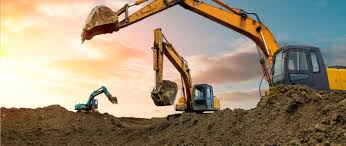Land Development

About Land Development
Land development is altering the landscape in any number of ways such as changing landforms from a natural or semi-natural state for a purpose such as agriculture or housing, subdividing real estate into lots, typically for the purpose of building homes, Real estate development or changing its purpose, for example by converting an unused factory complex into condominia.Development Analysis puts development prospects and the development process itself under the microscope, identifying where enhancements and improvements can be introduced.
Land development puts more emphasis on the expected economic development as a result of the process; "land conversion" tries to focus on the general physical and biological aspects of the land use change. "Land improvement" in the economic sense can often lead to land degradation from the ecological perspective. Land development and the change in land value does not usually take into account changes in the ecology of the developed area. While conversion of (rural) land with a vegetation carpet to building land may result in a rise in economic growth and rising land prices, the irreversibility of lost flora and fauna because of habitat destruction, the loss of ecosystem services and resulting decline in environmental value is only considered a priori in environmental full-cost accounting.
Any time a property owner wishes to change what uses and buildings are permitted on that property, or wants to subdivide their parcel into more than one lot, a land development application is required.The controls and process for changing land use, structures, and subdivision of property are established through provincial legislation, but approval for land development procedure is given by the province to municipalities to review, consider, and when appropriate, approve.Conversion of raw land into construction ready housing, commercial, or industrial building sites. Land development process involves improvements that have indefinite life, such as draining, dredging, excavating, filling, grading, paving, etc.
Conversion to building land is as a rule associated with road building, which in itself already brings topsoil abrasion,soil compaction and modification of the soil's chemical composition through soil stabilization, creation of impervious surfaces and, subsequently, (polluted) surface runoff water.New creation of farmland (or 'agricultural land conversion') will rely on the conversion and development of previous forests, savannas or grassland. Recreation of farmland from wasteland, deserts or previous impervious surfaces is considerably less frequent because of the degraded or missing fertile soil in the latter. Starting from forests, land is made arable by assarting or slash-and-burn.

